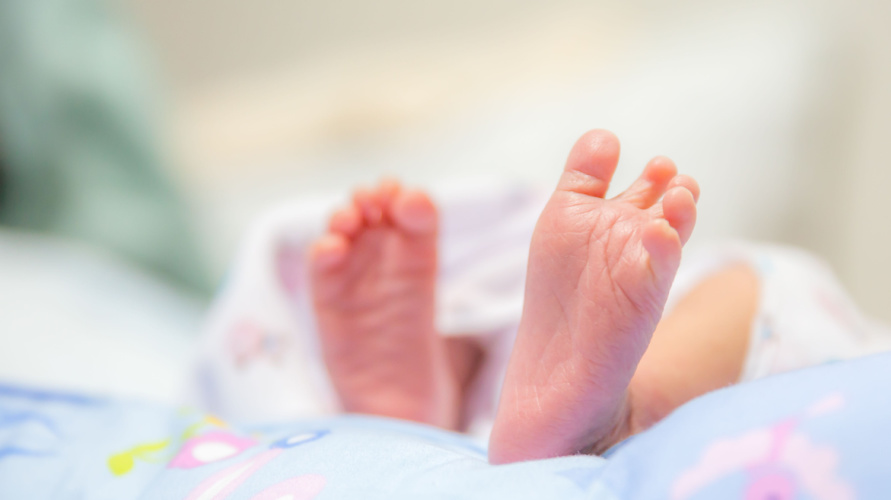
IUGR and LBW are conditions when a baby is born with a weight below normal. Even though at first glance they look the same, these are actually different conditions. To find out more about the differences between IUGR and LBW, let’s look at the following explanation.
What is IUGR and LBW?
IUGR or Intrauterine Growth Restriction is a condition when the fetus is smaller than it should be if measured based on gestational age. This means that the fetus does not develop according to the normal achievements of a fetus of its age.
A fetus is considered to have IUGR if its weight is smaller than 9 out of 10 fetuses of the same age.
Meanwhile, LBW or Low Birth Weight is a condition when a baby is born weighing less than 2,500 grams.
Although both are characterized by a body weight below normal, IUGR is a term used for fetuses with below normal growth while in the womb. Meanwhile, LBW is used for babies born with a body weight of less than 2,500 grams, regardless of the cause.
So, babies with IUGR conditions are definitely born with LBW conditions, but babies with LBW conditions are not necessarily caused by IUGR.
LBW can be caused by premature birth, where the baby develops according to gestational age, but is born sooner than expected.
Generally, babies with IUGR or LBW can be born in healthy condition and only need more intensive care during pregnancy and early in life.
However, both are at greater risk of experiencing serious health problems in the long term when compared to babies born with normal weight.
Causes of IUGR and LBW
There are several things that can cause babies to experience IUGR and LBW, namely:
1. Genetic factors from parents
Babies can have small bodies because both parents are also small. Apart from that, the mother’s medical condition can also cause the baby to experience IUGR and LBW.
Among the maternal health conditions that can cause IUGR and LBW include:
- Chronic diseases such as high blood pressure, diabetes and heart disease
- Autoimmune disorders
- Infections during pregnancy such as rubella, syphilis, cytomegalovirus, or toxoplasmosis
- Bad habits such as smoking, drinking alcohol or illegal drugs
The possibility of a baby experiencing IUGR and LBW is also greater if the mother has previously had a baby with the same condition.
In addition, mothers who do not gain enough weight during pregnancy, as well as give birth at the age of less than 17 years or more than 35 years are also more at risk of giving birth to a baby with less weight.
2. Placental problems
The baby’s development can also be hampered due to problems with the placenta, which normally functions to carry nutrients, oxygen and blood from the mother to the fetus.
Inhibited nutritional intake for the fetus can cause the baby to develop more slowly and have a body that is too small for its gestational age, as well as being born with a low body weight.
3. Problems with the fetus
Fetal growth and development can also be influenced by abnormalities experienced by the baby. For example, if the baby has a chromosomal abnormality or genetic disorder such as Down syndrome, or experiences an infection while in the womb.
Apart from that, if the mother is pregnant with twins, the risk of the babies experiencing IUGR and LBW can also increase due to competition for nutrition. In fact, more than half of twins are born with low birth weight.
Treatment of babies with IUGR and LBW
The difference between IUGR and LBW also lies in the treatment.
1. IUGR Treatment
When a baby experiences IUGR the doctor may advise the mother to undergo the following treatment:
- Intensive monitoring of the condition of the mother and fetus
- Consume healthy foods with sufficient calories every day, according to doctor’s advice.
- Get enough rest and get enough sleep eight hours per night.
- Change to a healthier lifestyle and stop smoking and drinking alcohol.
- Adjustment of the type of medical drugs being consumed.
- Pay attention to decreased fetal movement.
If the baby’s growth is too slow or the fetus is in danger, the doctor may recommend early delivery. If induction is necessary, the mother may be given corticosteroid medication to help the baby’s lung development.
2. LBW treatment
Treatment for babies diagnosed with LBW will depend on the symptoms, age and health condition of the baby.
Depending on the condition, babies with LBW can receive treatment:
- Treatment in the neonatal intensive care unit (NICU)
- Temperature controlled bed
- Administration of oxygen and surfactant. Babies with immature lungs require additional oxygen or surfactant (a protein that maintains the air sacs in the lungs)
- Special feeding can be given through a tube into the stomach if the baby cannot breastfeed or given intravenously.
Babies with IUGR or LBW who do not have significant health problems can generally grow and reach normal body size over time. However, if the baby has other health conditions, then the baby needs to receive treatment for the disease condition he is experiencing.
So, that’s information about the difference between IUGR and LBW. So that the health of the mother and baby can continue to be monitored, it is very important to check with the obstetrician regularly according to the schedule given. Always consult a doctor if you have questions or concerns about your pregnancy.
